25+ of The Best Places to Visit in Poland: by a Local
Poland is a beautiful place that you can visit at any time of the year because there’s always something going on. Every season has different activities to offer.
While Poland is often associated closely with the Second World War, there’s much more to the country than just historical sites related to the war. The country literally has everything: sea, lakes, forests, castles, mountains, even a desert, and good food.
As a native Polish person I am very well placed to advise you on the best places to visit in Poland and help craft your itinerary. There’s way beyond just Warsaw and Krakow, some of these places are quite unique and most tourists never go there.
Top Places to See in Poland
(for More Unique Places to See in Poland scroll down)
1. Warsaw
Being the capital of the country, everyone’s first port of call when visiting Poland is Warsaw. In many ways, it is a city much like many other European cities but is very much steeped in a rich history, having played a big roll in, and having been heavily damaged during the Second World War.
The city’s architecture is a living canvas of the various eras the city has seen, from dramatic Gothic churches, Soviet-style buildings, and modern-day skyscrapers, all intermingling.
Although there’s much to see in terms of culture and history, like The Royal Castle and The Palace of Culture and Science, the city is also home to a UNESCO World Heritage site in the form of Warsaw Old Town. There, you’ll find the beating heart of the city, with its narrow streets, colorful houses, and the 16th-century Castle Square in which stands the famous Warsaw Mermaid statue, built as the symbol of Warsaw.
See the heart of the renowned composer Frédéric Chopin at the Church of the Holy Cross or visit one of the largest Jewish cemeteries in the world at the Cmentarz Zydowski. Dine at traditional Polish restaurants such as Zapiecek (for tasty Pierogi) or Bar Mleczny (to experience a real Polish milk bar) or sample real Polish street foods like the grilled open sandwiches known as Zapiekanki.
Check Out my Ultimate Guide to Warsaw
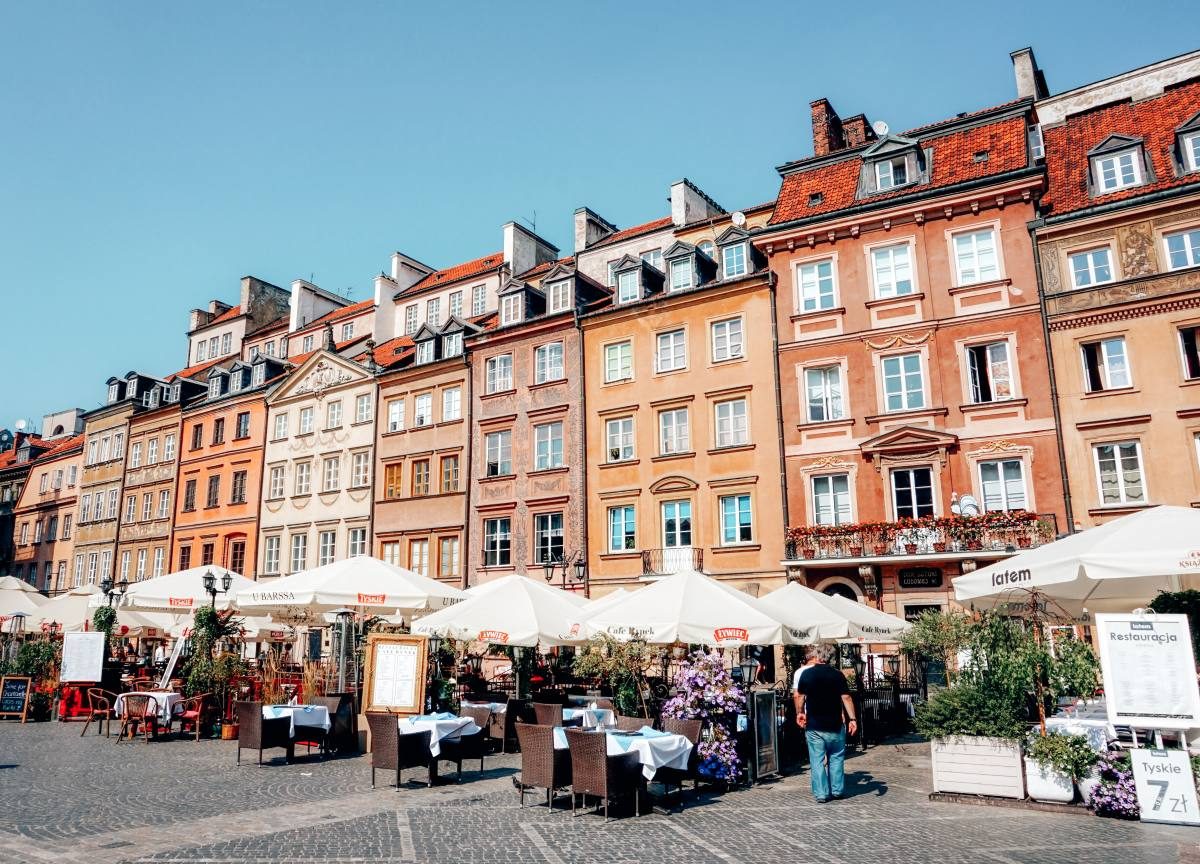
2. Krakow
To the south of Poland, bordering the Czech Republic, the city of Krakow, whose history dates as far back as the 7th century, has retained much of its regal medieval essence as well as its Rennaissance-era elegance.
It’s less touristy than Warsaw, but just as rich in terms of historic sites, a grand market square, typically Polish colorful architecture, and delicious traditional food spots.
The most popular attractions in Krakow include the Cloth Hall, which used to be a bustling market during medieval times and remains so today, and the St. Mary’s Basilica with one of the most jaw-dropping Gothic altars in Europe. You can actually walk through the ancient streets of Krakow at the Rynek Underground Museum or visit St Andrew’s Church built in 1079.
Not to forget that Poland is best known for its elegant castles and the Wawel Castle is no exception, you could easily spend half a day there exploring the grounds and taking in the history.
There are lots of World War Two sites to visit in and around Krakow as well, including Schindler’s Factory whose part in the war made such an impact on the world that they had the feature movie Schindler’s List made in 1993 featuring Liam Neeson.
Read More on Things to Do in Krakow
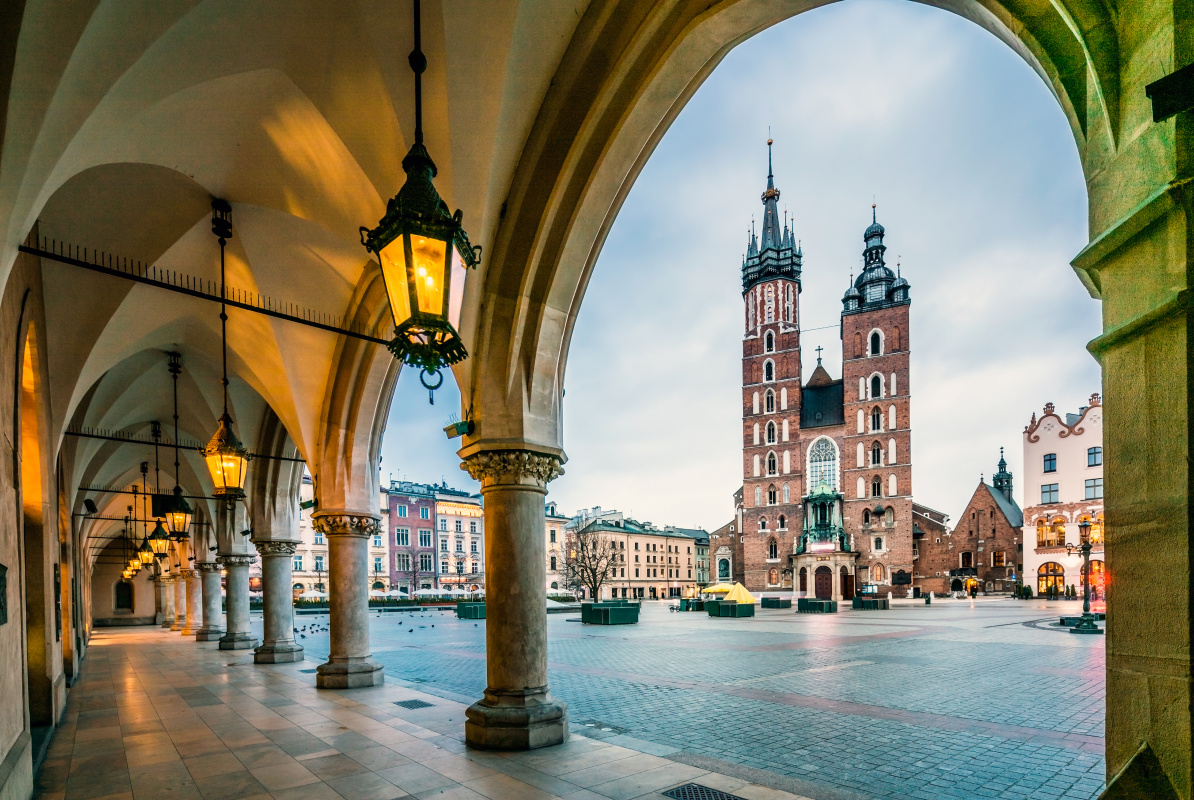
3. Wieliczka
Best known for its 13th century Wieliczka Salt Mine, this southern town is around a four-hour drive away from the capital Warsaw.
The mine is an underground network of tunnels and over 2000 grand excavated chambers, astonishingly shaped chapels, sculptures, and enchanting subterrestrial lakes. Tours of the mines take about 3 hours.
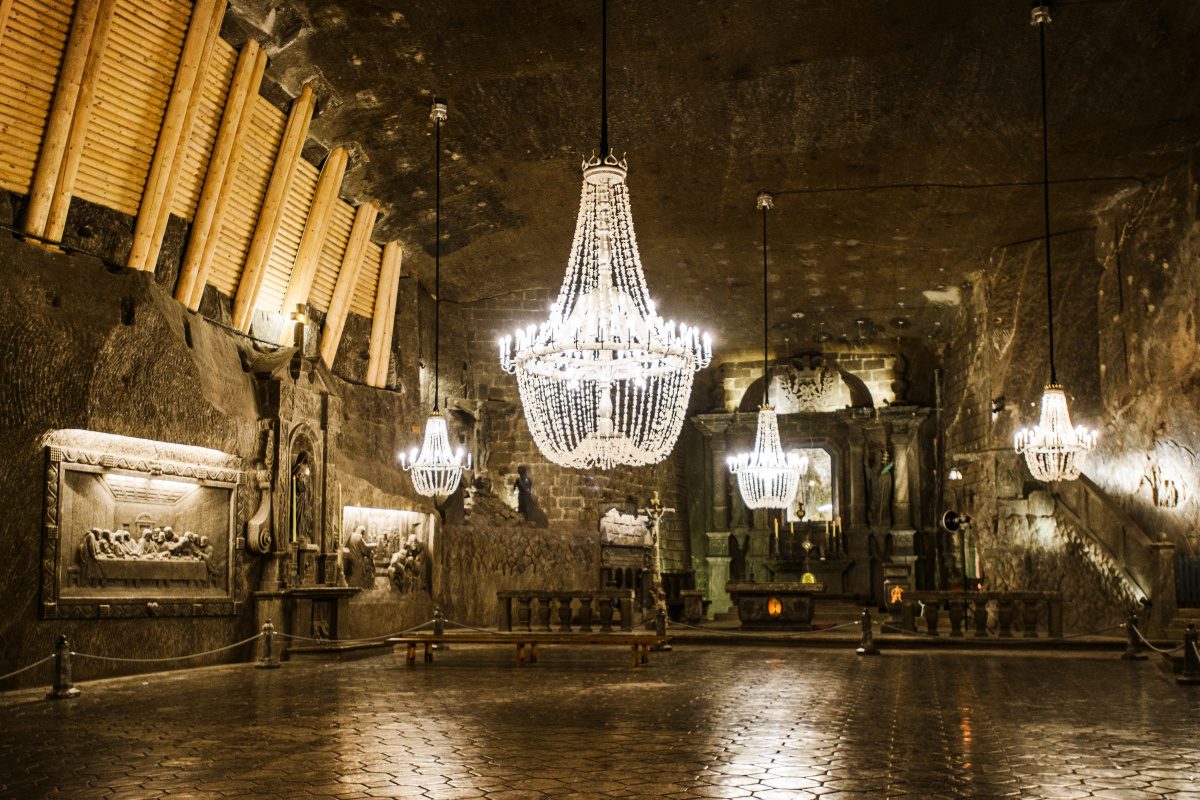
4. Tatra Mountains
The misty jagged Tatra Mountains form part of the Carpathian Mountain range, about 2 hours away from Krakow, that creates a natural parkland border between Poland and Slovakia.
During summer, the mountains attract hikers from all over the world with its rumbling meadows of alpine blooms. During winter, the snow-topped peaks have made skiing a popular pastime of Polish locals and visitors alike.
Hiking routes range from beginner-friendly to very difficult and the landscape is pure, breathtaking, and some of Mother Nature’s finest. Spots worth not missing are the Valley of Five Lakes, The Black Pond, Wodogrzmoty Mickiewicza Waterfall as well as Koscielisko Valley.
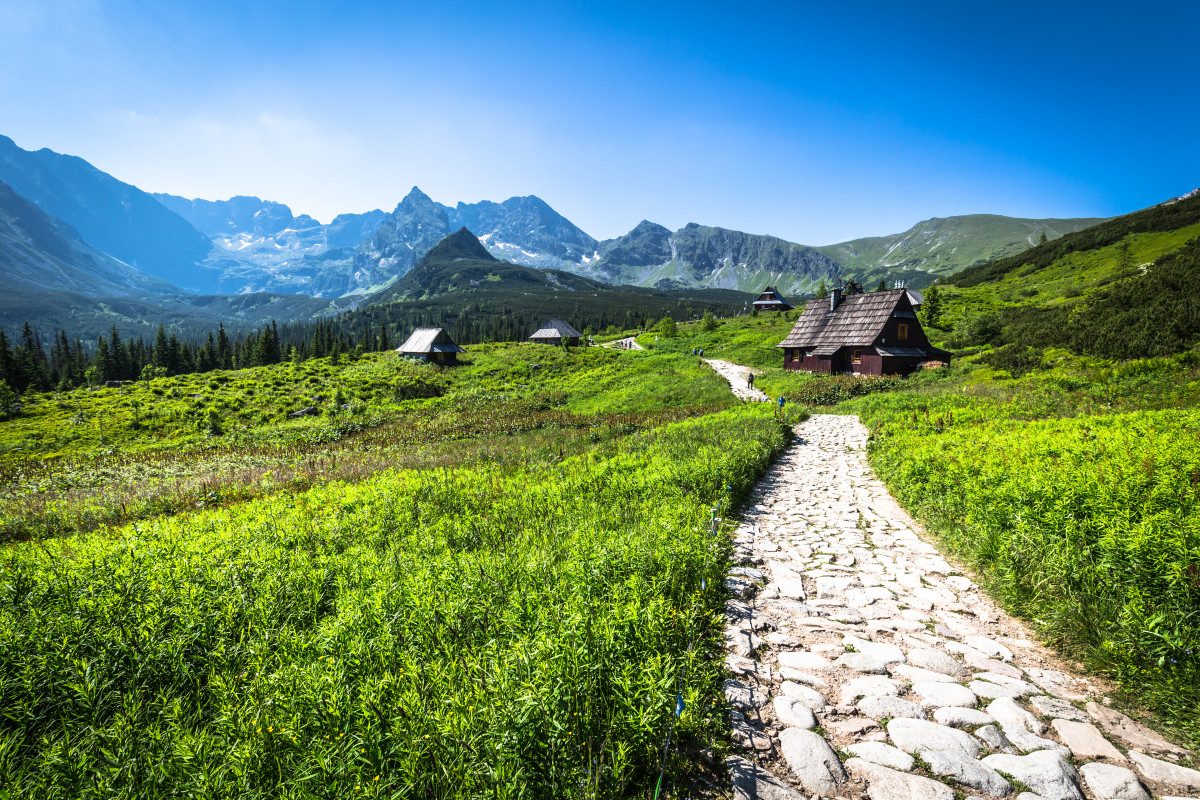
5. Zakopane
Known as the winter capital of Poland, the resort town of Zakopane at the base of the Tantras is most popular for being the prime spot for winter sports in the cold seasons and climbing and hiking in the summer months.
One of the most popular scenic areas for both is the Western peak at Kasprowy Wierch which is easily reached by a cable car from the center of the resort. It’s also a good starting point for other sought-after Polish landmarks and activities like the Tantra National Park, Lake Morskie Oko, and rafting through the Dunajec Gorge.
Nonetheless, it’s sometimes easy to forget that before the boom of the tourist industries, places like Zakopane were once real traditional Polish towns, which means that there’s so much more to experience than skiing and hiking. The town itself is rich in Polish traditions which you can see in its town center, like the local markets selling crafts made from wool and wood, or traditional sheep cheeses.
Krupówki street is lively with museums like Karol Szymanowski’s Museum and churches like the Old Church and Cemetary. Not to mention all the shops and restaurants where you can sample the best of Polish food.
If you were to see postcard-perfect pictures of Zakopane, it would surely be of the typical 20th-century wooden chalets in the symbolic architectural style of the area. You could also pay a visit to the thermal spas 20km outside of Zakopane for a special experience.

6. Morskie Oko
You’ll find Lake Morskie Oko deep within the Tatra Mountains. It’s the largest lake in the mountain range and on days of calm weather, the lake creates an entrancing mirror image of the green, often snow peaked mountains all around including Rysy, the tallest of the Tatras.
There’s a clearly paved trail that you can hike to get to the lake as well as one that takes you further up for a full view of the lake from above. Local horse-drawn carts are also available to take you up the easy trail.

7. Chocholowska Valley
Not only the largest valley in the Tatra Mountains, but the Chocholowska Valley is also the perfect vacation spot for families of all ages. You can get to the valley by bus from Zakopane or it’s quite easy to take a car or bike and once there.
The hiking trails are easy and ideal for everyone from small children to the elderly. The length of the trail runs from the entrance of the national park to the Siwa Polana-Chochołowska Valley mountain shelter on Chocholowska Glade.
The views in the valley are spectacular, from the small lakes surrounded by towering pine trees to fields of mountain flowers of lilac and sunshine yellow.
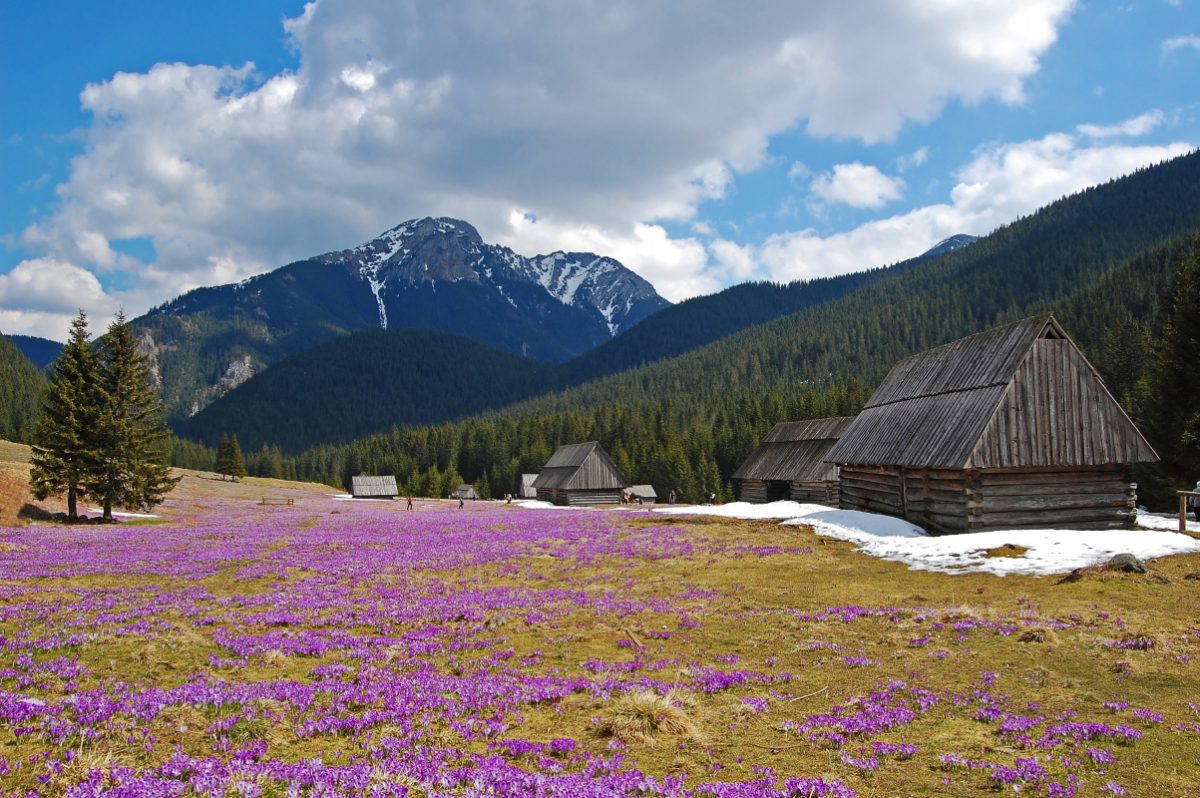
8. Malbork
A beautiful, quiet town in the north of the country, Malbork boasts one of Poland’s gorgeous castle forts, the 13th century Castle of the Teutonic Order in Malbork which was declared a UNESCO World Heritage Site and is the main reason why most people make this a pit stop on their visit to Poland.
The Castle is worth a visit for its museum which houses both natural and historical collections as well as contemporary pieces.
There is not much more to see in this rural town apart from a Dinosaur Park and Theme Park so a lot of people recommend not spending more than a night in the town.
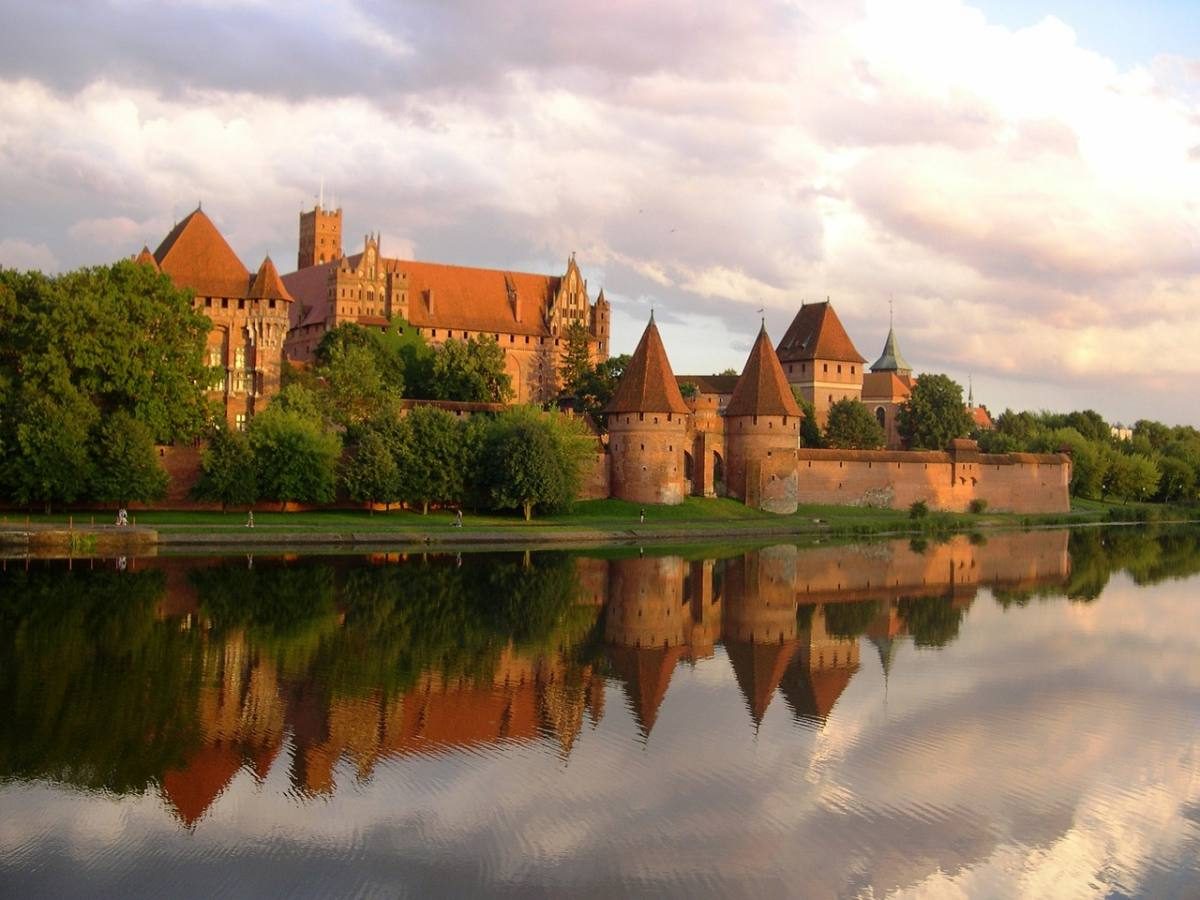
9. Gdansk
The port city of Gdansk on the Baltic Coast boasts a 1000-year-old history, having been the capital of the historic region of Pomerania when the area was split between modern-day Poland and Germany. There are so many historical landmarks in the city, not to mention the unique local markets, perfectly preserved fortifications, and gorgeous bourgeois and harbor architecture, that make the city so rich in culture.
The Gothic temple at St Mary’s Basilica is more than 500 years old and stands impressively on the city’s skyscape, it’s often known as the Crown of Gdansk. Another icon, simply known as The Crane, was one of the largest Port Cranes in Europe during the Middle Ages.
The Museum of Amber and Museum of Torture offer insights into two very different but equally interesting aspects of the city’s history. Fort Carré is one of Europe’s best-preserved 16th-century defensive structures that allows visitors to step into the past and imagine the battles of the past.
Not to forget the 17th century Neptune Fountain not far from the center of town and visit ground zero for the Second World War at Westerplatte.
The city is also more than its historical aspect. Today it remains the center of the world’s amber trade, there’s a popular zoo to visit as well as several viewpoints from which to marvel at the sea-facing view of the city.
Take a walk down the Royal Way, stroll down the Embankment, or try one of the popular restaurants like Pierogarnia Mandu for the best pierogi in town and you must visit Restauracja Kubicki to dine at the oldest restaurant in Gdansk.
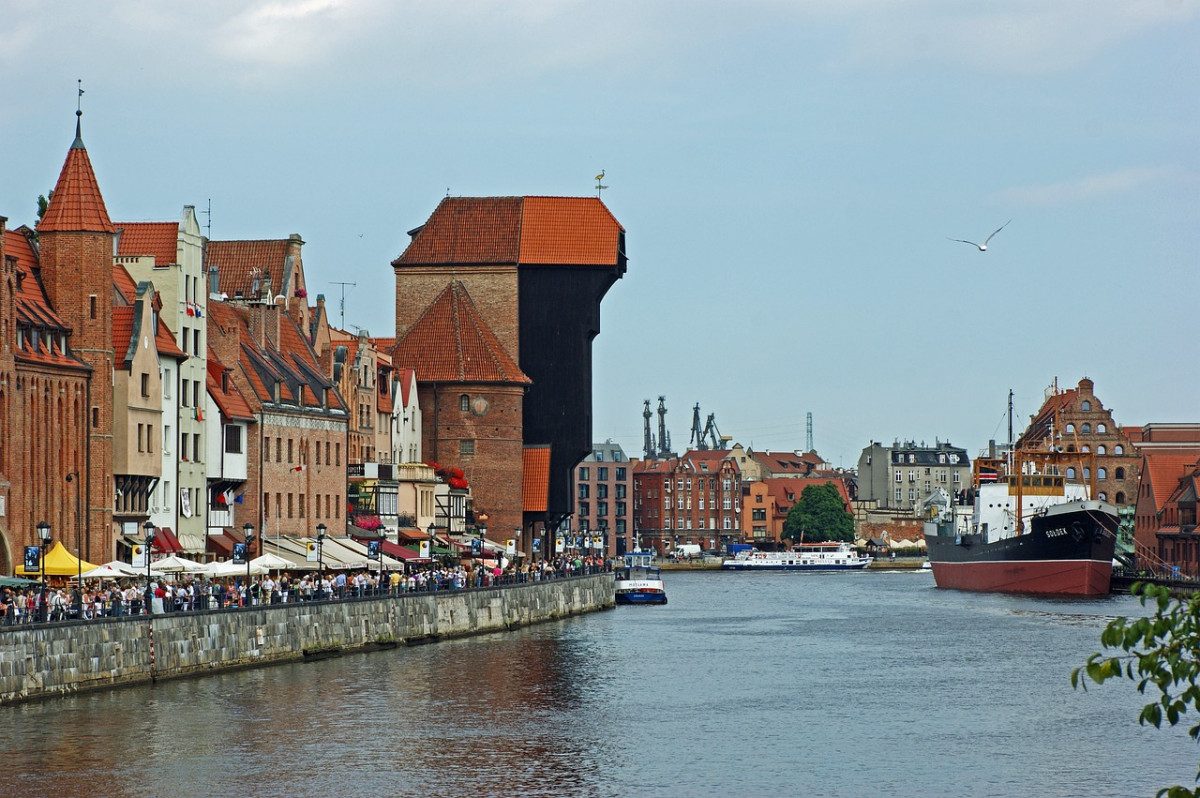
10. Leba
Not far from the main city of Gdansk, Leba (pronounced ‘way-bah’) is so named for being at the mouth of the river Leba on the Baltic Coast. It’s home to rugged, natural coastal features like stunning beaches, picturesque shifting sand dunes, calm lakes, and the Słowiński National Park.
Popular activities include sailing, cycling the National Park, and during peak season the beaches do get quite full of visitors making the most of the lazy beach life.
Visit the 1904 Stilo Lighthouse, attempt to escape the Labyrinth Park, visit the little Amber Museum or eat traditional food like Zurek at Pałac Poraj or Pierogi at Koga Restaurant.
The town’s quieter attractions make it perfect for a vacation simply to take in the Polish culture without the hustle and bustle of the busier city areas.
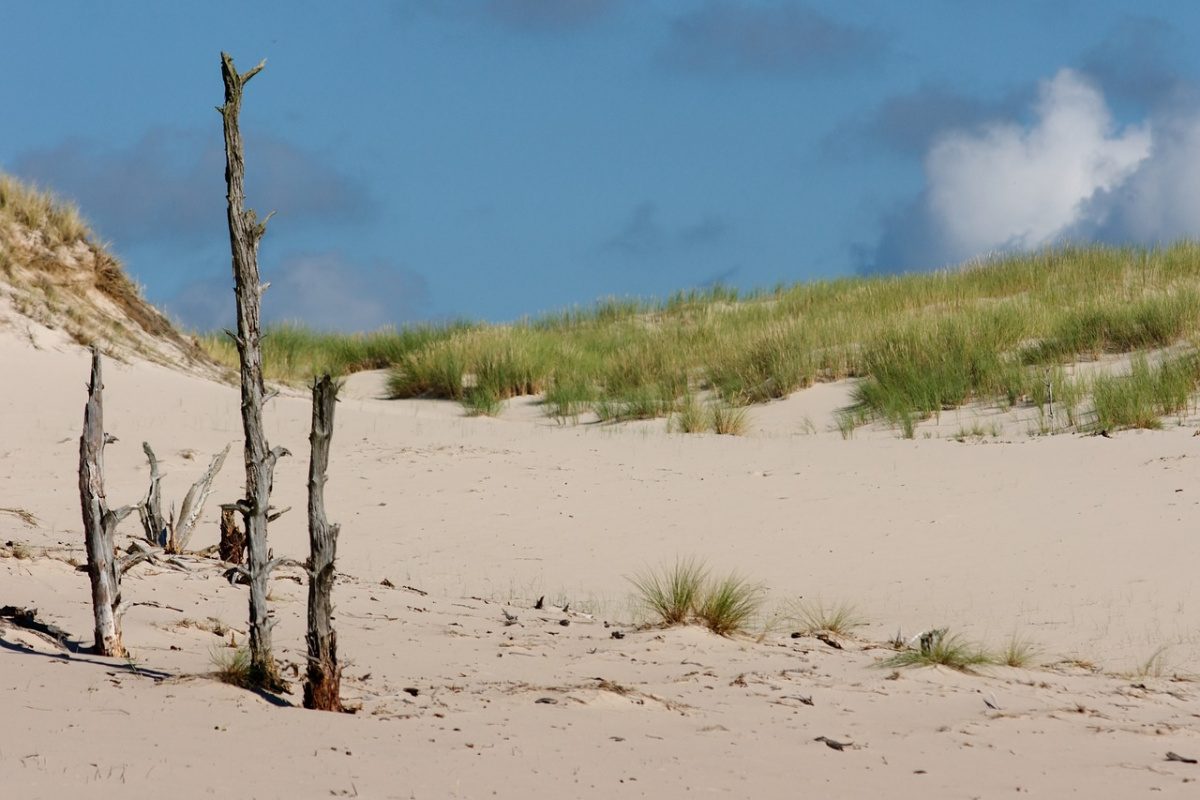
11. Bialowieza Forest
On the border between Poland and Belarus, the Bialowieza Forest, a UNESCO World Heritage Site, has successfully been preserved as the last primeval forest in lowland Europe. It’s important because of its singular opportunities for biodiversity conservation and as the home of Europe’s heaviest land animal, the bison. The forests are also home to a unique variety of gigantic trees and endemic wildlife like bears, wolves, and elks.
Trips into the forest start from Białowieża village, where there are plenty of accommodations and facilities to explore the area, like bike rentals and local restaurants, although you could choose to stay in one of the small nearby villages or take a tour from Warsaw.
You can get to the village by bus, car, or train, the longest journey being 9 hours by bus. Once you’re there, you might want to plan a trip in advance because a lot of rural residents may not speak English very well and you want to be prepared.
You can book a tour with a recommended company, where they’ll plan your whole trip beginning with your departure from Warsaw, but you also have the option of discovering the forest on your own. The main starting point is the town of Hajnówka, called ‘the Gateway to the Forest’.
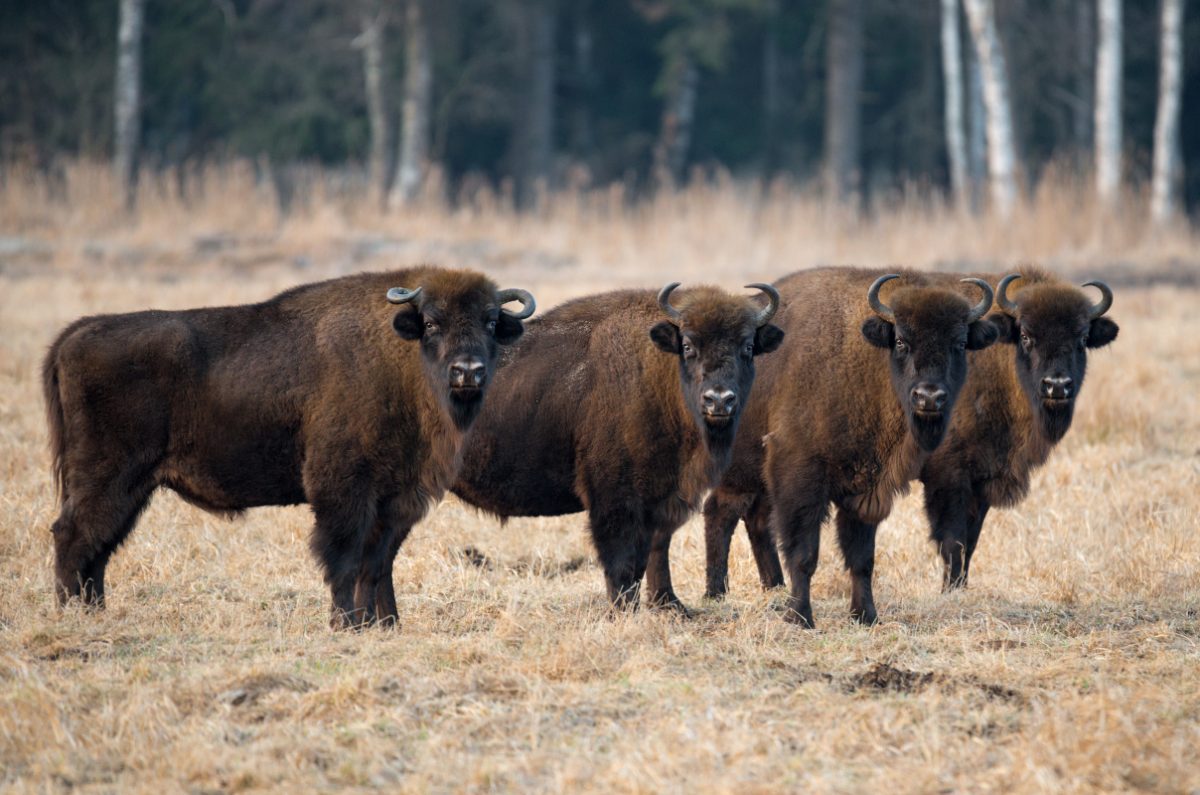
12. Zamosc
Founded in 1580 and located about 450km away from Warsaw, the city of Zamosc has been dubbed a unique example of a Renaissance town in Central Europe because it embodies everything that the era was about including liberalism and elegant architecture.
The Old Town is the city’s ‘piece de resistance’, being a UNESCO World Heritage Site because of its preserved sixteenth-century state made up of the old merchant houses, the grand town hall, and the Zamoyski Palace.
The historical brightly colored buildings are worth the visit but the Great Market Square also has plenty of shops and cafes and The Zamojskie Museum will give you a detailed insight into the rich history of the area.
The town also has a small 1500s Cathedral that still holds regular masses today but they also have a substantial Jewish history, which you can learn all about from the Zamość Synagogue built between 1610 and 1618.

13. Poznan
Poznan is a proud city, home to a buzzing bar scene, iconic colorful streets, a prominent history, and cheap and delicious traditional food, it’s so much more than meets the eye. It’s got a very young and modern vibe due to the several universities in the area but it still retains the charm and tradition of the old days.
There’s a big bike culture in the city which makes it fun to travel along all the streets and experience the energetic atmosphere that’s so easily missed, as well as all the restaurants and boutiques promoting local entrepreneurs.
See the famous The Watcher street painting by one of the world’s greatest artists who goes by the name of Noriaki or visit Zemsta book store best known for its support of unusual texts.
One of the city’s popular restaurants is Oskoma, where they put a special twist on traditional Polish classic. Another beloved classic with the locals and students is U Dziadka (pronounced “o-jadka”) where they make you feel right at home with their popular dishes like the chunky pan-fried pork chops and buttery potatoes. And let’s not forget you absolutely need to try the town’s own special pastry, the St Martin’s croissant.
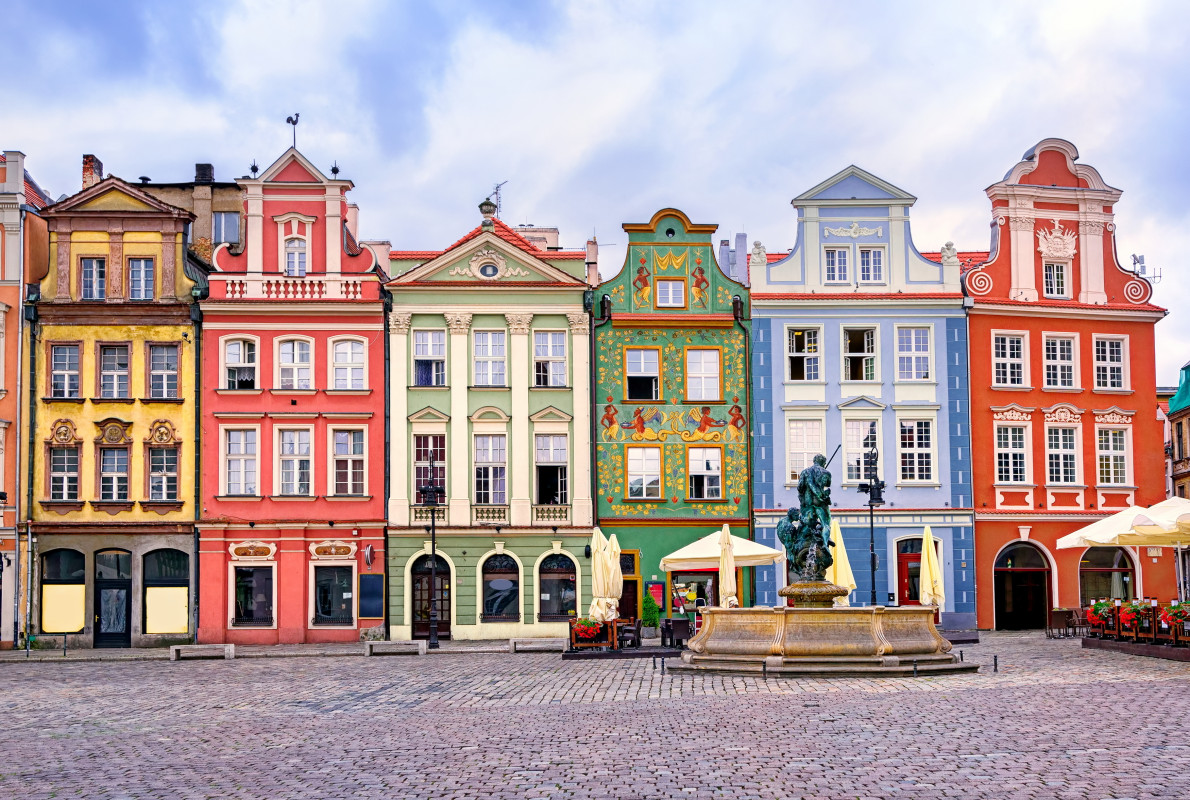
14. Masurian Lake District
Also known as the Masurian Lakeland, the northeastern area of Poland has its own dialect, is so called because it has over 2000 lakes and is mostly untouched country. Although it is the poorest region in the country, it is the richest in terms of free wildlife and virgin landscapes.
It’s the perfect place for outdoor camping with lots of open fields, forests, hikes, and pleasant walks; it’s often called the ‘green lungs of Poland’. Not to mention all of the water activities available on all the lakes and water bodies likd sailing, kayaking, fishing, and more.
There are a few villages and resort towns in the area from which you can make a base, one of the more popular camping ones being the village of Ublik. A lot of the organic farms also offer farm stays or you could decide on a more luxurious spa resort in the great outdoors.
If you’re looking for a bit of history even as far out as here, you can find Wolf’s Lair in Masuria too, which is Hitler’s former Second World War military headquarters where he spent more than 800 days and survived an assassination attempt in 1944.
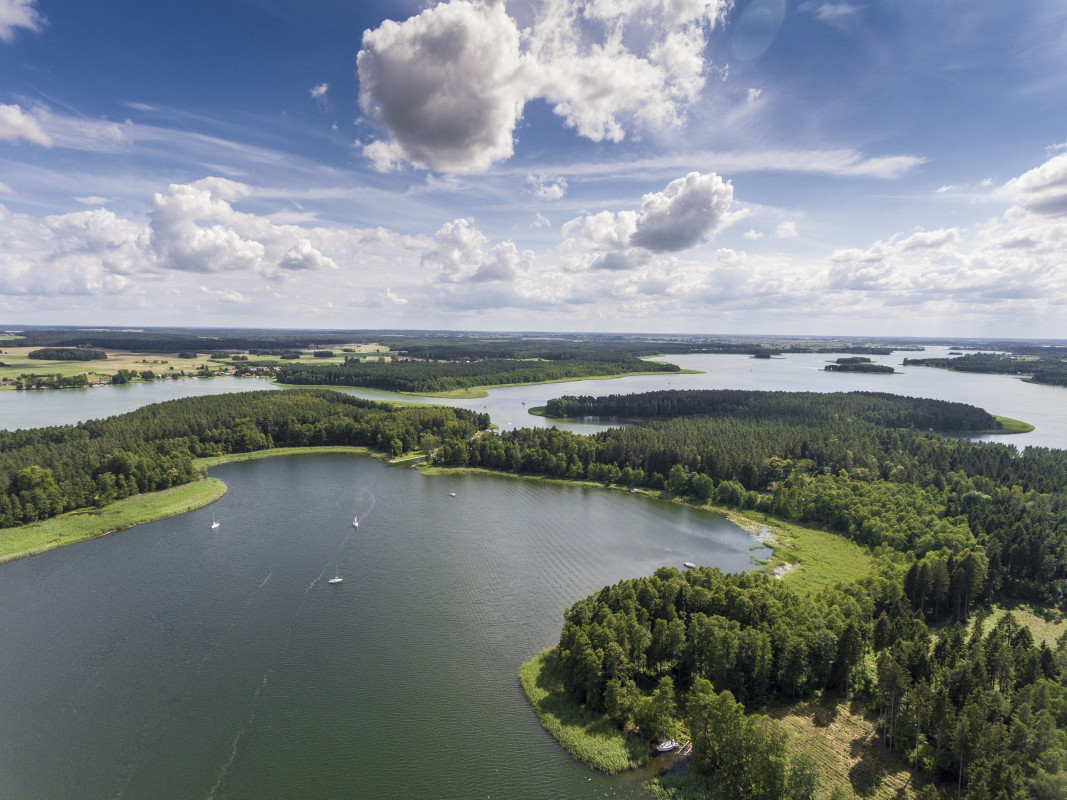
15. Torun
Surprisingly, Torun was one of the few towns that were saved from any damage during the Second World War. This town has a unique beauty both in its visual architectural value and its cultural atmosphere that has attracted artists and academics from all over the world for years.
The three-hour tour of the city’s Old Town is worth every minute and takes you to places such as Caesar’s Arch, St. Mary’s Church, the Copernicus Monument (for the famous astronomer Nicolaus Copernicus), and the Holy Spirit Gate. Visit the leaning tower of Torun and explore the Teutonic Knights Castle which is one of the oldest of its kind in the world.
Indulge in Poland’s popular Milk Bar at Bar Mlecznys, don’t miss out on Torun’s local gingerbread, and be sure to sample other classics like zurek and pierogi to get the full traditional experience.

16. Wroclaw
Found on the Oder River, Wroclaw (pronounced vrots-wahf) is a strange and beautiful old city, made up of 12 islands and over 100 bridges connecting them. Its most prominent feature is a large astronomical clock at the 18th century Town Hall but there are plenty more things to do!
It’s got some unique architectural landmarks such as the Panorama of Racławice, a painting depicting the 1794 battle for independence, and the Centennial Hall auditorium, with its giant dome and tall spire which lies across the river.
The area is a very important commercial and educational center in Poland but is also a very vibrant cultural hub that hosts several festivals and boasts a vibrant nightlife.
Check Out my Ultimate Guide to Wroclaw
17. Auschwitz
Auschwitz needs little to no introduction, known worldwide for the atrocities it endured during the Holocaust and the Nazi occupation of Poland. Over 40 concentration and death camps were run here and today they, and the museums, are humbling to visit and a reminder of the cruelty and destruction of war.
It’s free of charge to visit the Memorial and walk around by yourself but if you want to take a guided tour you’ll have to make a reservation online and pay a fee depending on the type of tour and size of the group.
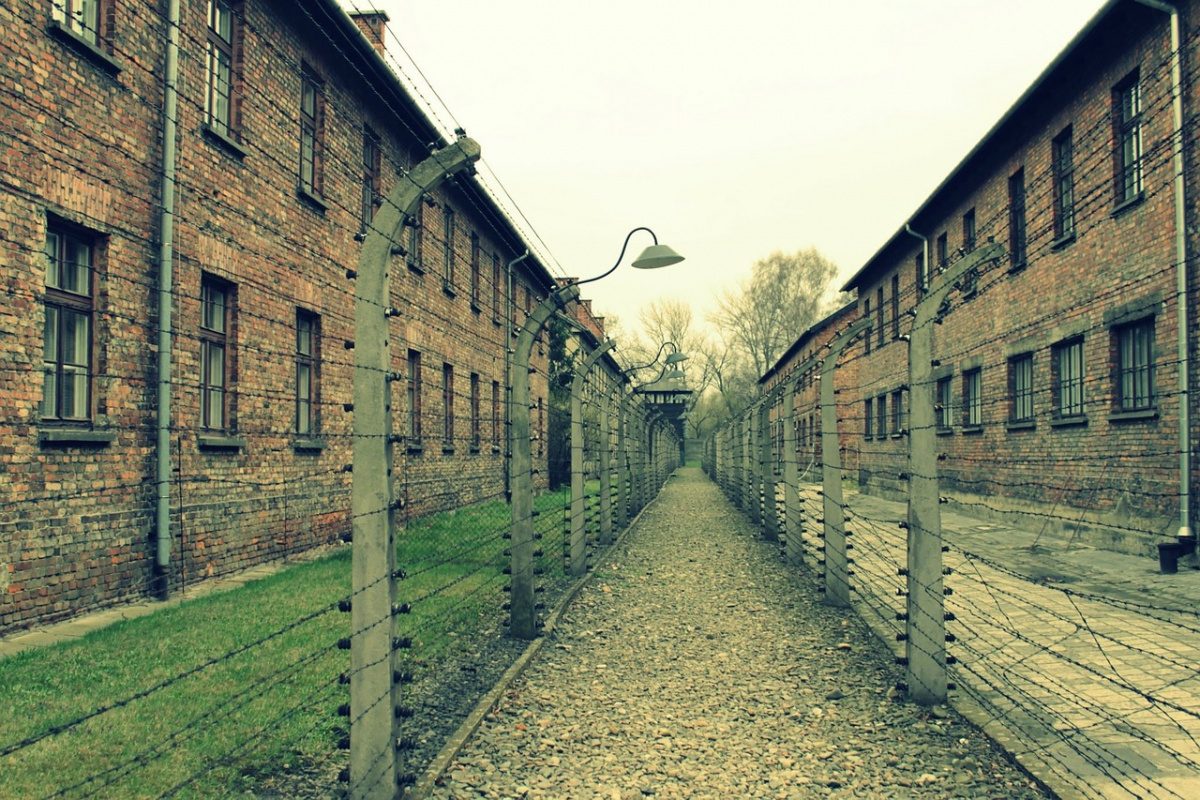
Unique Places to Visit in Poland
18. Crooked Forest
The mysterious Crooked Forest looks like something out of a Grimm Brothers story and is a unique site that’s worth a visit, with around 400 pine trees that grow with a near-perfect 90-degree curve at their base.
The forest, also known as Krzywy Las, has been around since the 1930s and while some believe they’re due to a unique gravitational pull in the area, it’s more likely that they were purposely mutated by local farmers in the area when they were planted.
The forest is about a 1-hour bus ride from the town of Gryfino in the west of the country. The town was evacuated during the war so those who would have had the answers to the truth behind the peculiar trees have sadly long since gone.
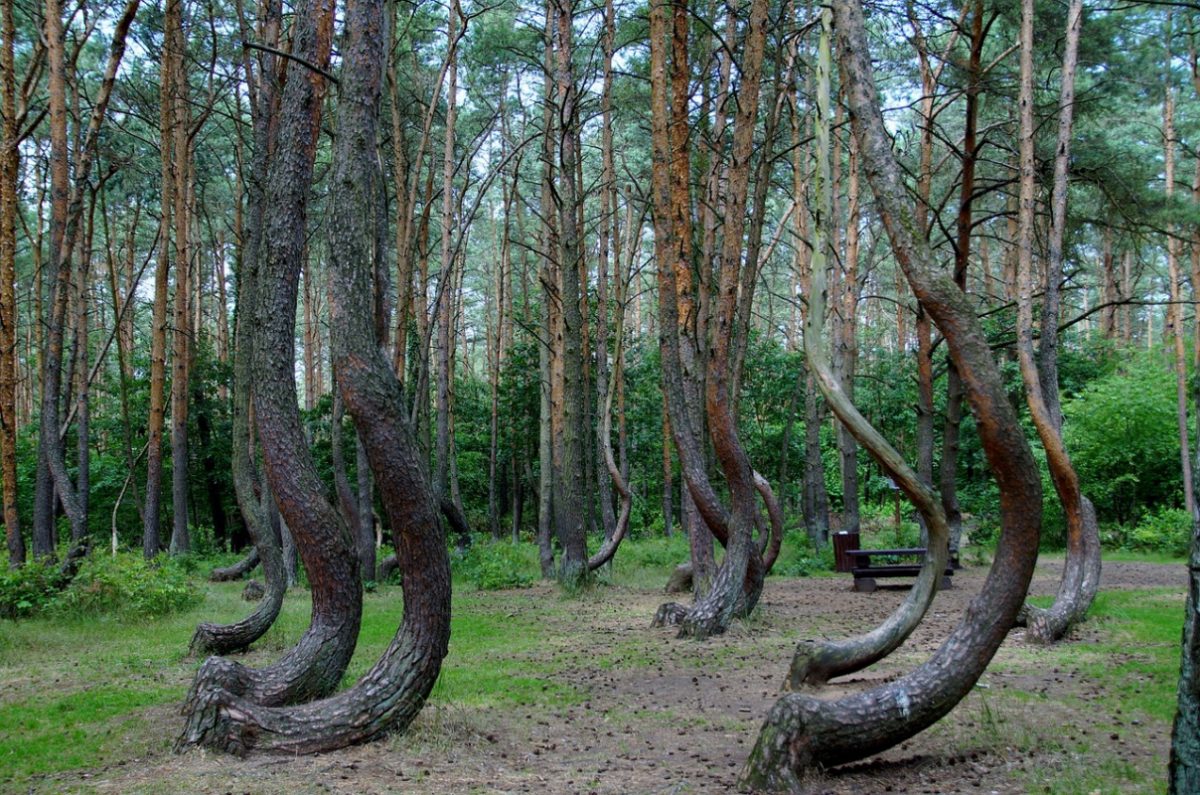
19. Ksiaz Castle
This 13th-century castle is the largest in the Silesia region and looks like a fairy tale, with brightly colored walls, turrets, and elegant ramparts. It underwent a transformation from Gothic to the Baroque style in the 18th century and in the 1940s, the castle became Hitler’s headquarters after the Nazi invasion and his decision to move from Wolf’s Lair.
There are stories that Hitler had plans to make an underground network beneath the Sowie Mountains on which the castle lies but that remains a mystery even today.
After the war, the castle was left abandoned and restorations were only fully completed as recently as 2005. Visitors can tour the castle’s great halls and compound either alone or with a pre-organized tour or even spend a night here.

20. Czestochowa
The southern city of Czestochowa is often undersold as a tourist destination but ‘the Holy City‘ is well worth the visit. It has a famous religious history, having been the home of St Paul’s Monastery of Jasna Góra which houses a shrine to the Virgin Mary known as the Black Madonna painting.
Pilgrims come in the millions from all over the world to pay homage every year. The Monastery and other religious areas in the city are some of the most revered in the Roman Catholic religion and the adjoining museums house unique artifacts and books.
Not to forget the unexpected landmark that a lot of people don’t know exists in Czestochowa, the World’s Tallest Pope Statue. The fiberglass statue measures 13.8 meters tall and depicts Pope John Paul II.
The great thing about this city is that it still has all of the beautiful thirteenth-century architecture that the other main cities are known for, like the iconic Town Hall, cathedral, and Old Market Square but Czestochowa is both less crowded and much cheaper than the main areas.
The city even has its own castle, or at least the ruins of one, at Olsztyn Castle where the views are stunning and there’s a popular 25-minute hike.

21. Ojcow National Park
If you’re visiting the busy city of Krakow and you’ve done all of the popular sights and experienced the vibrant city life, the perfect way to unwind and get some fresh outdoor air is to visit the Ojcow National Park.
It’s the smallest National Park in Poland but it makes up for its size with over 1000 species of multicolored trees and flowers, 135 species of birds and around 500 species of butterflies making it ideal nature for leisurely walks.
The Park is only 24 km from Krakow and easily accessible by car or bus but it’s just as pleasant to bike along the Vistula River. There’s a little coffee shop within the park where you can relax for a drink or for all the castle lovers, the Renaissance castle at Pieskowa Skała sits serenely at the top of a hill overlooking the glorious natural landscape of the Park.

22. Jaskinia Niedzwiedzia
Discovered in 1966, this incredible excavation site near the village of Kletno, also known as the Bear Cave, is the longest cave in the Śnieżnik Mountains and the deepest in Poland.
It’s made up of three known levels, has a depth of around 100m, and is most popular for its middle cave featuring impressive preserved stalactites and a large range of ice-age animal bones and remains.
A tour of the cave takes around 45 minutes and because the site is a Nature Reserve, they do have a limit on the number of daily visitors that they allow so it may be best to book in advance.
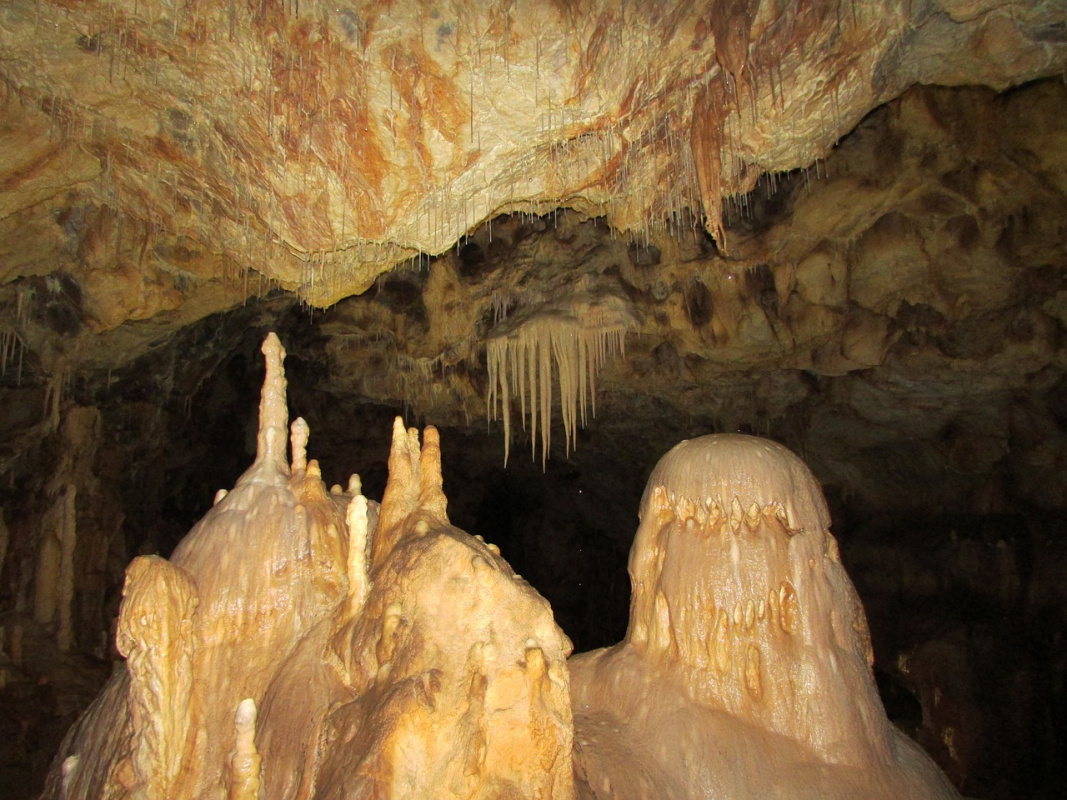
23. Biskupin
The famous archaeological site at Biskupin, is an open-air museum that portrays a life-size reconstructed Iron Age fortified settlement in Poland, whose origins are believed to date back to 700 BC.
The origins of the people who once inhabited the structure are not well known but it is thought that they were a highly developed culture made up of the intricate design of the fortification and the settlement. The site is located on Lake Biskupin, about 5 hours away from Warsaw by train.
Every year in September, the Archeological Festival in Biskupin sees history fans from all over Europe get together to experience archeology at work. There are various workshops on life back in the Iron Age, which includes how to forge your own arrowhead and there are presentations on battles and early craftsmanship, all while listening to the sounds of music from times long gone by.

24. Zalipie Village
The houses in Zalipie village are adorned with hand-painted artistic flower patterns and a very special atmosphere, making this the most colorful and unique village in Poland.
It’s not just the houses, trees, furniture, dog houses, and household items are all painted in this special way. Some of the houses are extra special and worth seeing, such as The House of the Woman Painters. All of the paintings in the village are unique and everyone has their own take of the traditional designs.
The village itself is very peaceful and a perfect city break, with lush greenery and fresh air all around. If you want to see how the paintings are done, pay a visit to the folk museum in the center of town and also be sure to check out Saint Joseph’s Church, with its similarly beautifully painted interior.
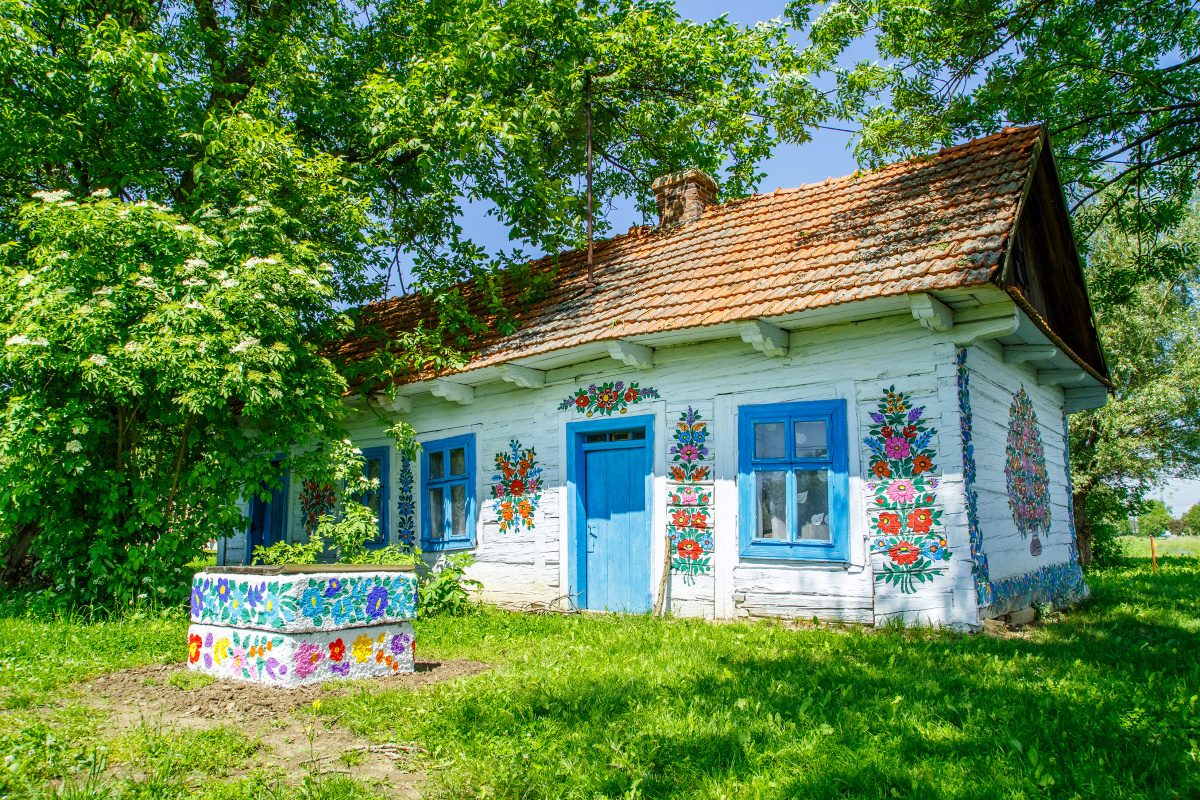
25. Wolf’s Liar
One of the most iconic historical World War II sights, Wolf’s Lair, hidden deep in the Polish wilderness, was Hitler’s first Eastern Front military headquarters which was built right in time for Operation Barbarossa, the invasion of the Soviet Union in 1941.
After one attempted assassination in 1944 and the explosion of a suitcase bomb, the hideaway was compromised so Hilter and his men abandoned the highly fortified base.
You can visit Wolf’s Lair and its network of bunkers, tunnels, and rooms by yourself, which should take about 2 hours, or with an organized tour from major cities like Warsaw. They also have a small hotel and restaurant on the compound in the renovated former headquarters of Hitler’s personal security, if you want to spend the night and explore the area better.
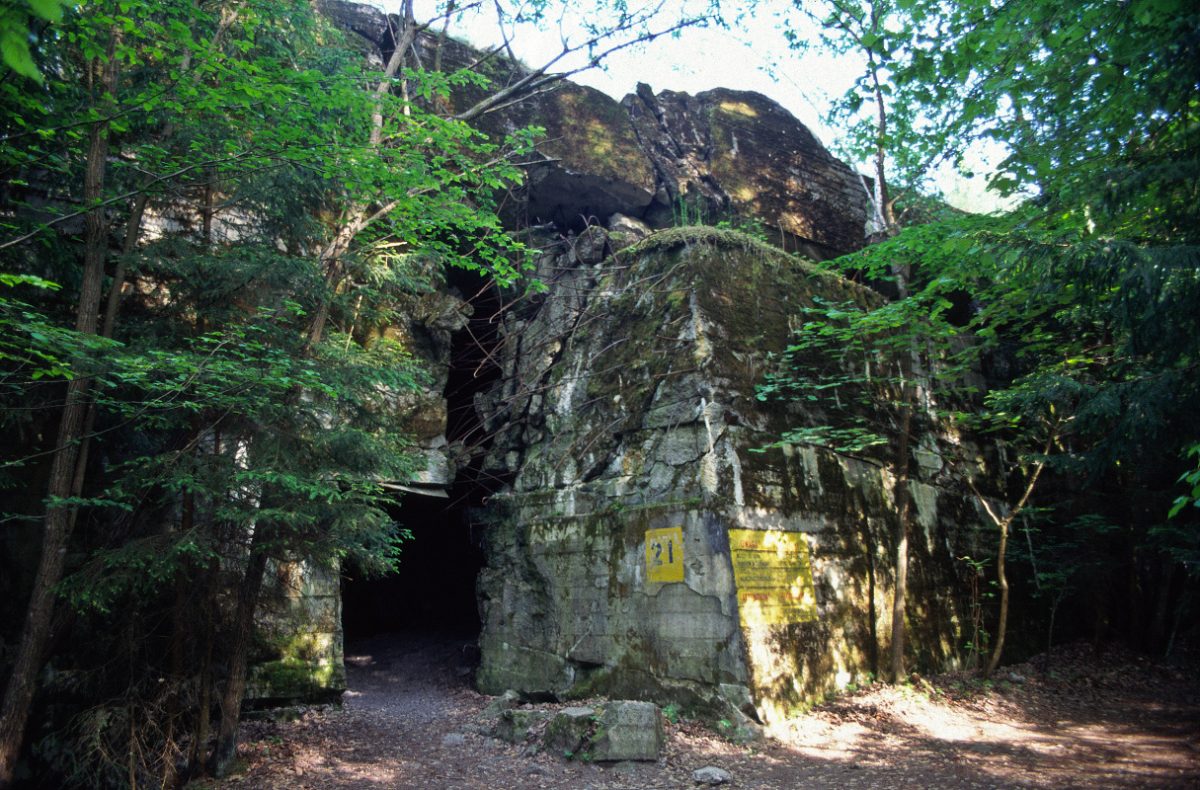
26. Chapel of Skulls
The Skull Chapel at St Bartholomew’s Church in the Czermna district of Kudowa was designed by Czech priest Vaclav Tomasek in the latest 1700s who created what he envisioned as a sanctuary of silence.
The chapel walls and ceilings are decorated, most in a Jolly Roger style, with the skulls and bones of 3000 people but another 21,000 are found in the crypt below.
It took Tomasek 18 years to collect, clean, and arrange all the bones in the church and the Chapel today is worth a visit for its unique and quite eery nature.
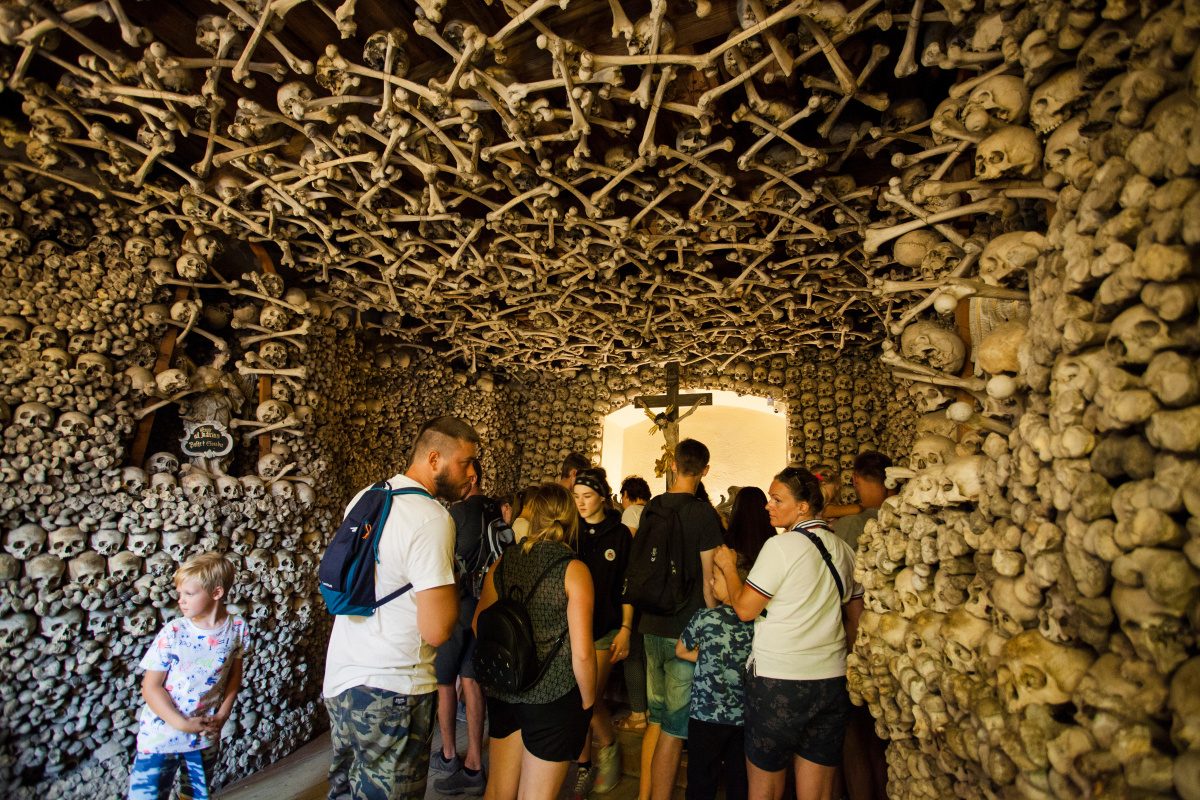
Any questions or suggestions? Do you know any more interesting places to see in Poland?
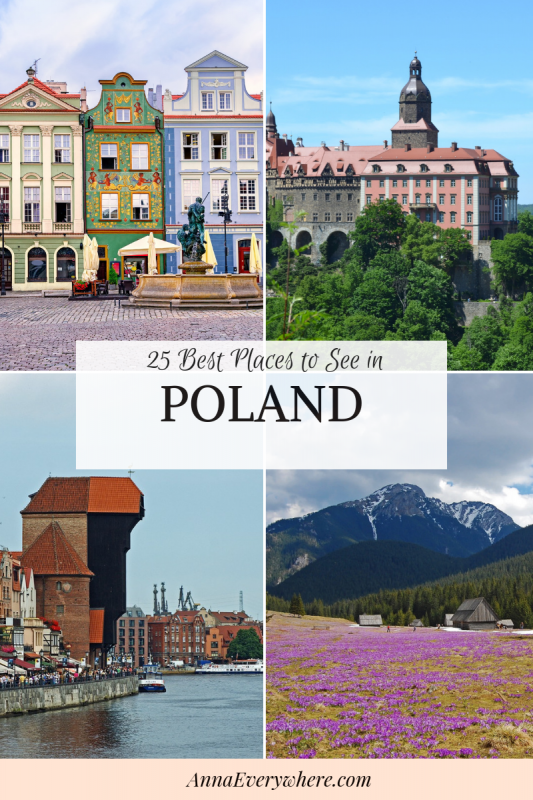
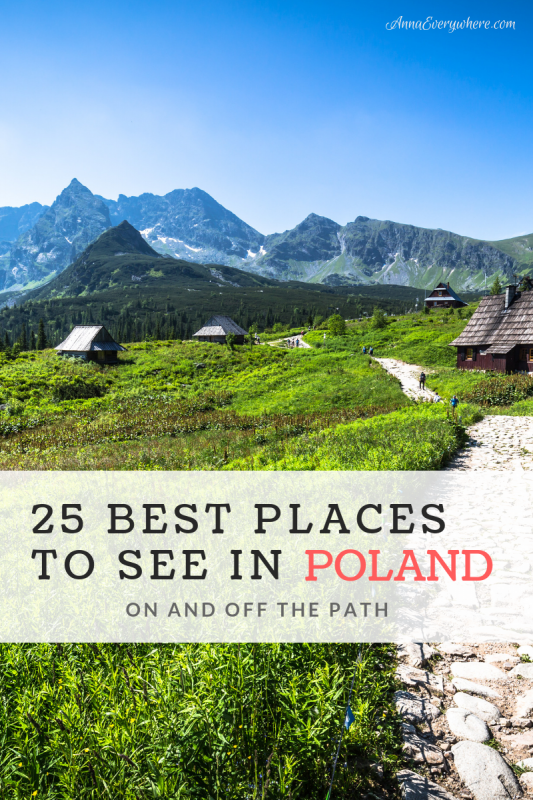

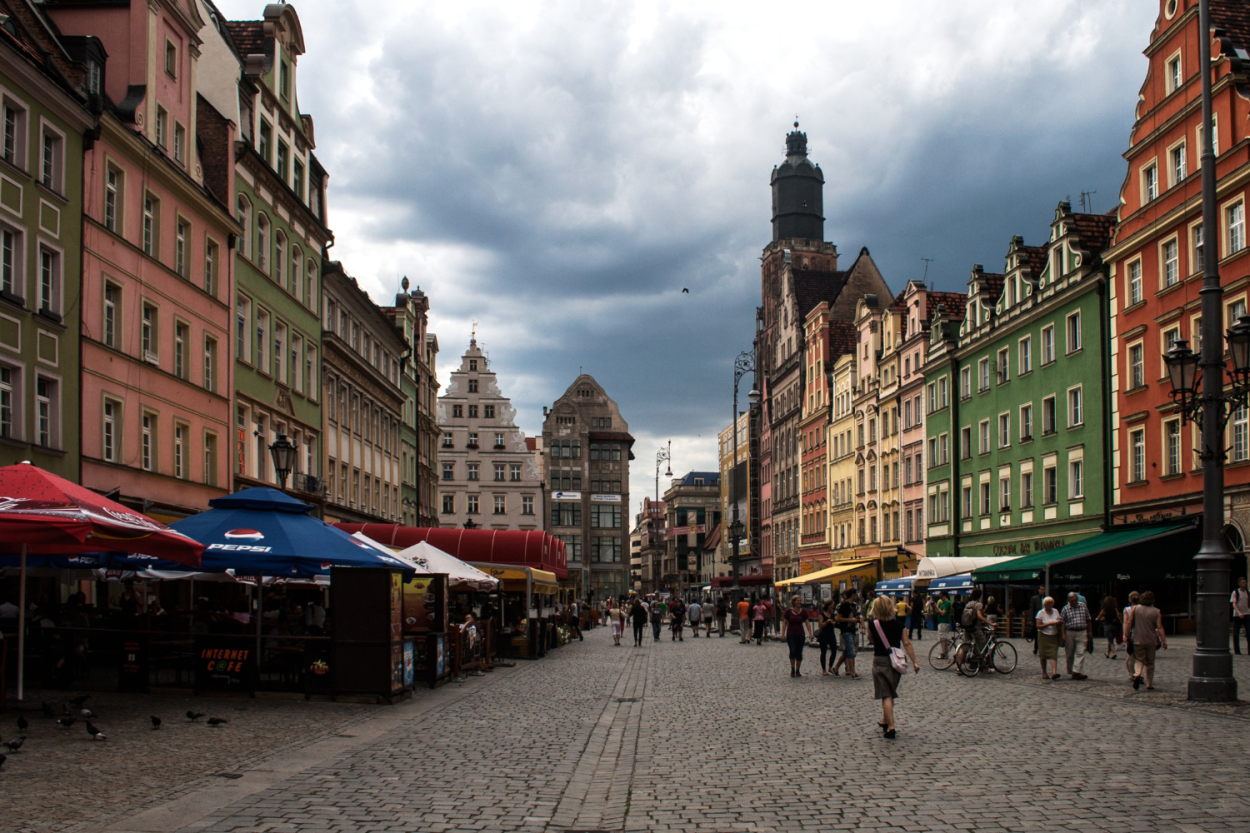

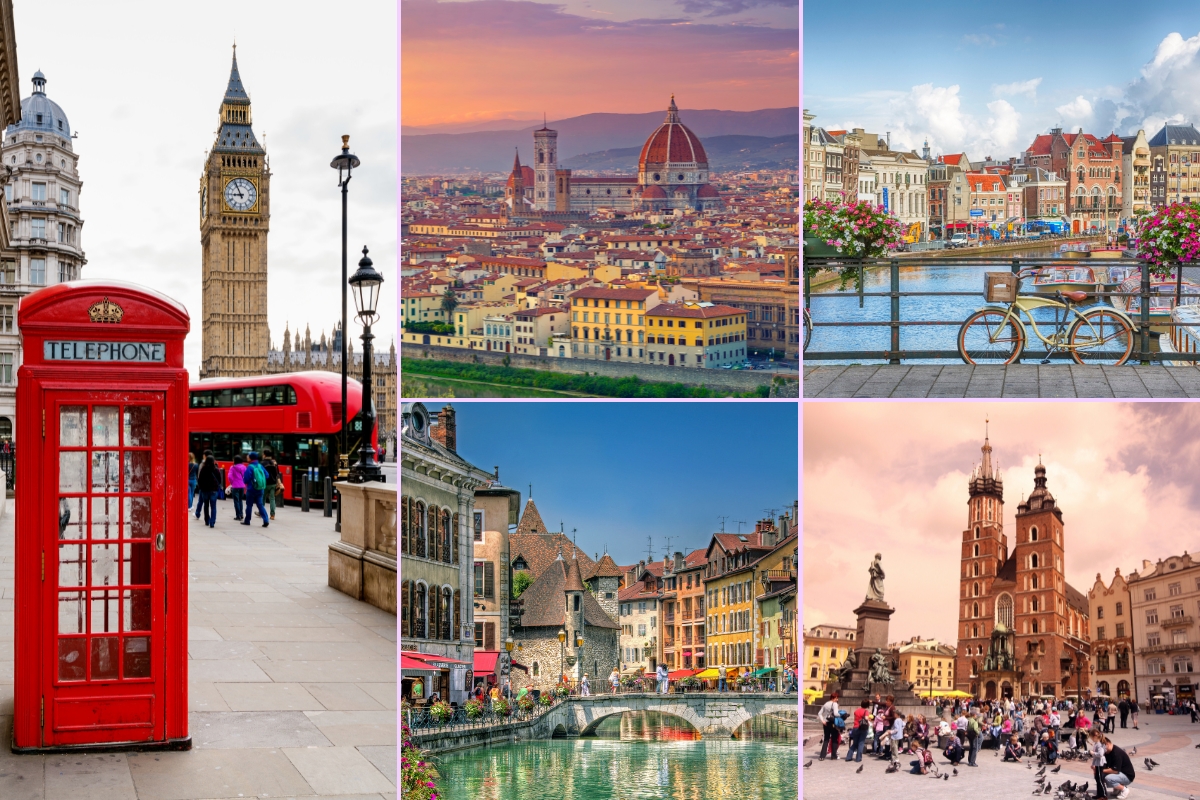
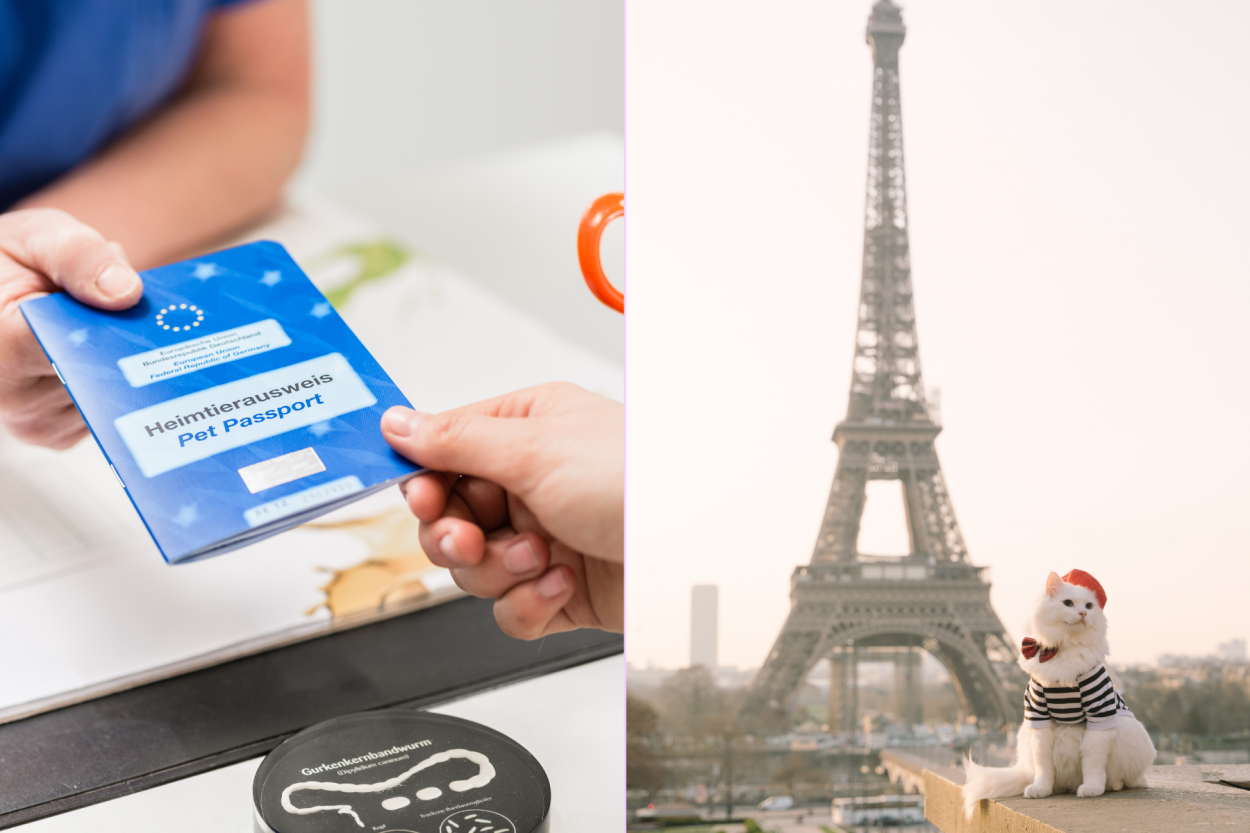
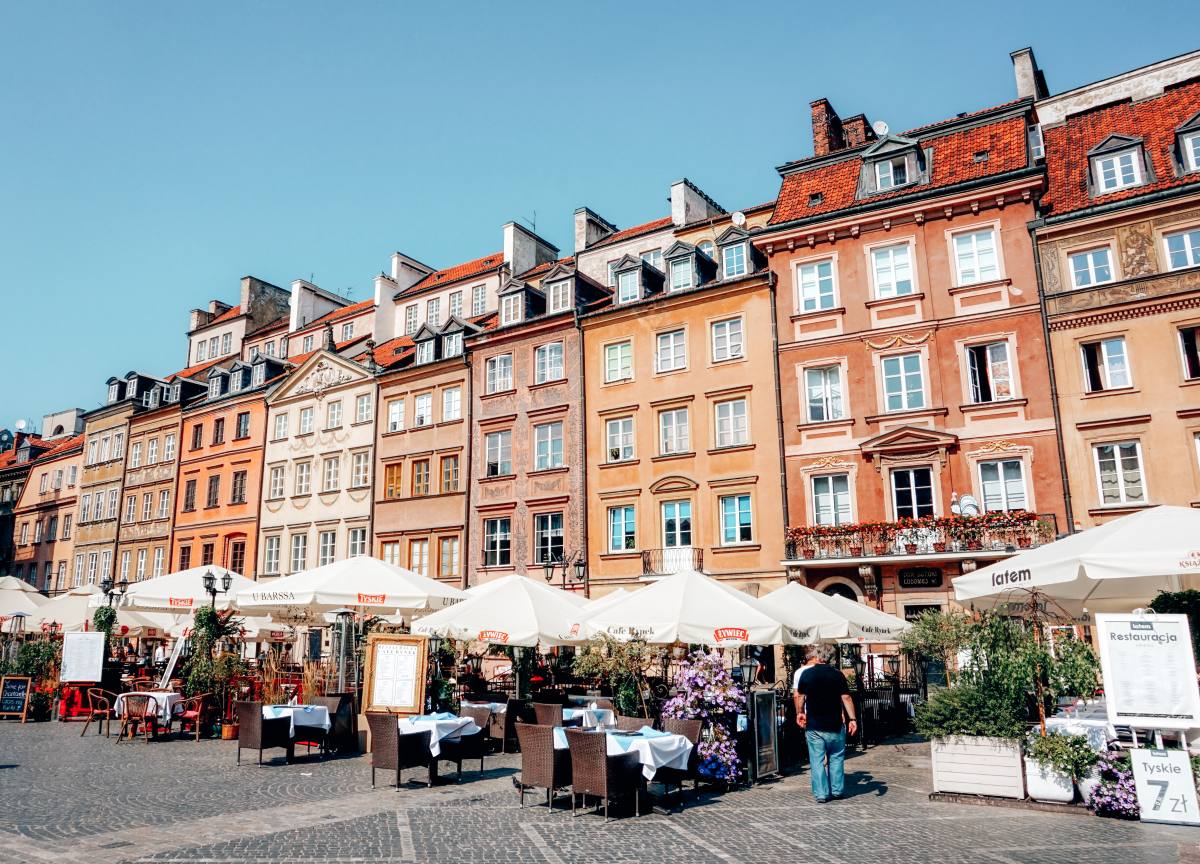
I am interested to travel to Poland next Spring. There are so many beautiful places and sites to see. I was hoping to meet
I was hoping during my visit to Poland, to meet family members of Stanislaus Zarzycki, Josephus Zarzycki, Antonio Zarzycki, as well as John Borkowski Family
We’ve been to Krakow, Warsaw, Gdansk and Wrocław. Our teenage children loved Wrocław most and my favourite is probably Gdansk. We have so many wonderful places still to visit, I think Poznan might be next but Poland just has so many stunning places. I am finding the language very hard to learn though!
Thanks for such a wonderful post Anna xx
Hi!
Great to see Poznan and some other unexpected locations in this article 🙂
Greetings from Poznan!
Had fun reading your website. I am 25% Polish & would love to visit there someday. I better hurry I am 78 but feel great!!!
Hello, My family (two kids 14/15 ) are coming to Poland in may 2023 We are flying in and out of Warsaw. your guides have been so helpful but I was wondering if you could suggest some where to go on the way and way back from Warsaw on the war to Krakow. for a night each way? (we will have a car) thank you